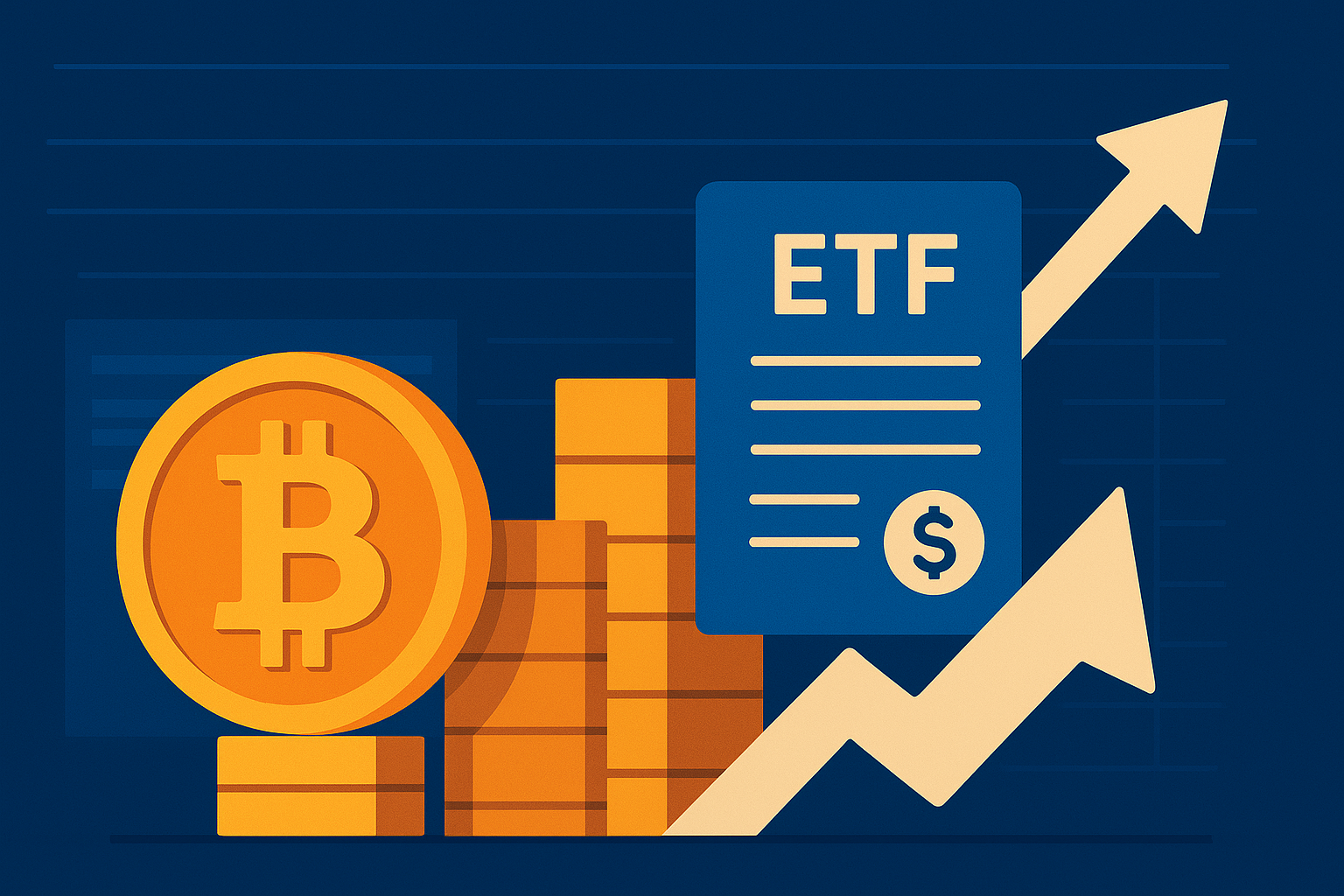Bitcoin’s relentless rally is rewriting the playbook for institutional investing. In what analysts are calling a watershed moment for digital assets, global crypto exchange-traded funds (ETFs) attracted a record $5.95 billion in net inflows last week, according to Reuters data — the highest on record since spot Bitcoin ETFs were first approved in the U.S. earlier this year.
The surge coincides with Bitcoin’s ascent past $125,000, a new all-time high that cements its position as a mainstream macro asset — not just a speculative trade. For many institutional investors, this is the clearest signal yet that crypto has matured into a legitimate part of global capital markets.
Institutional Capital Flows Signal a Structural Shift
For years, institutional hesitancy kept crypto on the margins of portfolio strategy. That wall has now cracked.
Funds from BlackRock’s iShares Bitcoin Trust (IBIT) and Fidelity’s Wise Origin Bitcoin Fund (FBTC) accounted for more than half of the week’s inflows, with IBIT alone surpassing $32 billion in total assets under management (AUM), per Bloomberg Intelligence.
Analysts note that this surge reflects a shift in how institutional capital engages with digital assets — through regulated and transparent ETF structures rather than offshore exchanges or unregulated derivatives. This evolution is strengthening market integrity, reducing counterparty risk, and expanding crypto’s reach into pension funds, family offices, and sovereign wealth portfolios.
“The ETF channel has become the preferred gateway for institutions,” said Eric Balchunas, senior ETF analyst at Bloomberg. “It provides compliance, custody, and liquidity in a package Wall Street understands.”
Why This Matters for Investors
Bitcoin’s climb to $125,000 is not just a price milestone — it represents a changing macro narrative.
As global bond yields soften and the Federal Reserve signals the start of a rate-cutting cycle, investors are seeking alternative assets with asymmetric upside. Bitcoin, with its fixed supply and decentralized nature, is being reframed as a “digital macro hedge” against monetary debasement and geopolitical instability.
Data from CoinShares shows that digital asset investment products have now logged ten consecutive weeks of inflows, totaling over $19 billion year-to-date — a record pace even surpassing the 2021 bull cycle.
Yet, not all signs point to unmitigated optimism. Market observers caution that the rapid institutionalization of Bitcoin could increase its correlation with traditional risk assets, potentially diluting its diversification benefits.
“This isn’t the same Bitcoin we saw five years ago,” noted JPMorgan strategist Nikolaos Panigirtzoglou. “As ETF ownership rises, Bitcoin’s behavior starts mirroring equities — particularly tech — rather than acting as a pure hedge.”
Future Trends to Watch
The success of Bitcoin ETFs is already spurring copycat filings for Ethereum and Solana-based products, as well as multi-asset crypto baskets aimed at offering diversified blockchain exposure.
At the same time, regulatory scrutiny is intensifying. The U.S. Securities and Exchange Commission (SEC) is expected to tighten disclosure requirements for digital asset funds by early 2026. Meanwhile, European regulators are weighing stricter custody and leverage limits on crypto-linked ETFs to curb systemic risks.
On the technical front, Bitcoin’s network fundamentals remain robust, with hashrate and transaction volumes at record levels. Long-term holders continue to accumulate, signaling strong conviction despite short-term volatility.
If institutional inflows persist through Q4, analysts project Bitcoin could test the $140,000–$150,000 range before year-end — though a sharp correction remains possible if liquidity tightens or macro sentiment shifts.
Key Investment Insight
The record ETF inflows mark a paradigm shift: Bitcoin is no longer an outsider asset. It’s becoming a fixture of institutional allocation models.
For investors, this means two things:
- Lower structural risk — thanks to regulated ETF access and institutional-grade custody.
- Higher macro exposure — Bitcoin will increasingly move with global liquidity and monetary cycles.
Active investors should monitor ETF flow data, options volume, and on-chain movement to gauge sentiment shifts. Meanwhile, strategic investors may consider dollar-cost averaging into ETF products rather than direct holdings, to mitigate volatility and regulatory risk.
As Bitcoin enters the institutional mainstream, the narrative is evolving from “digital gold” to “digital infrastructure.” The challenge now is discerning whether this newfound legitimacy marks the beginning of a durable asset class — or the peak of speculative euphoria.
Stay with MoneyNews.Today for the latest investor insights on crypto markets, digital assets, and global financial trends shaping tomorrow’s portfolios.





